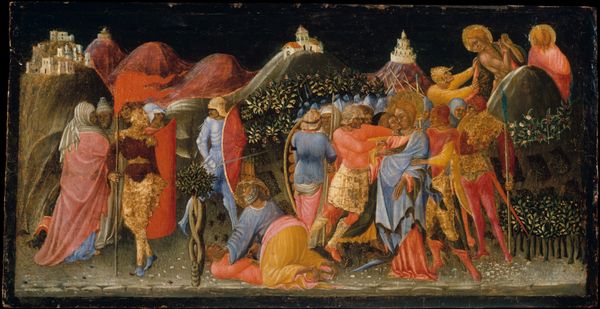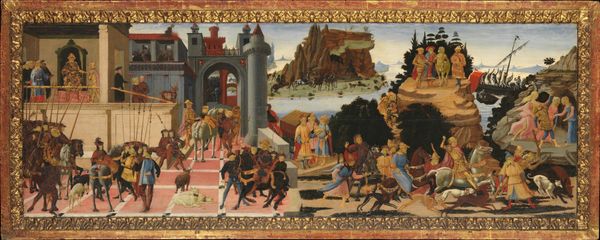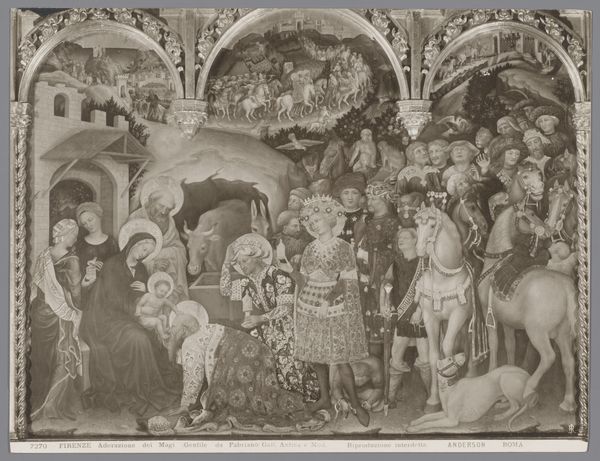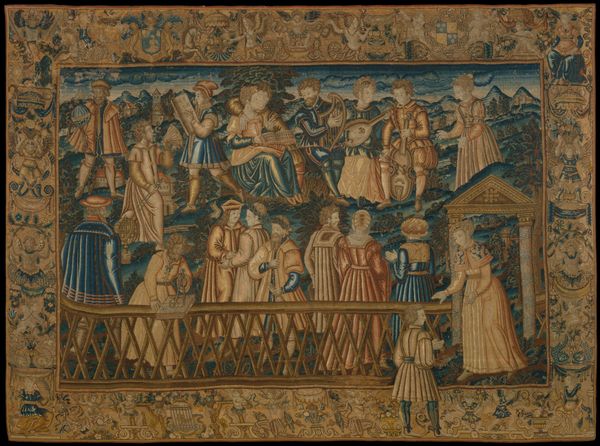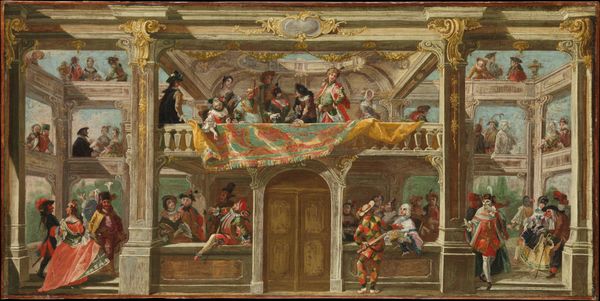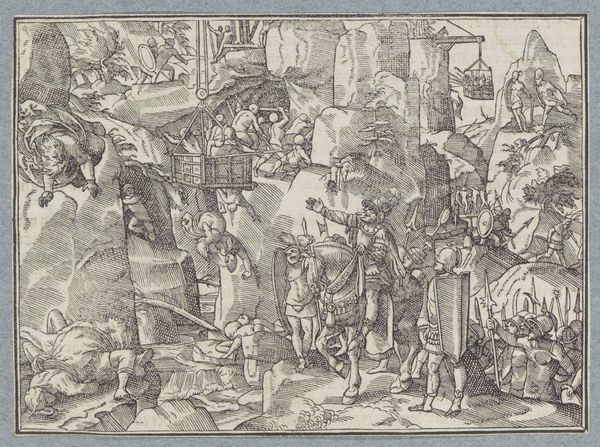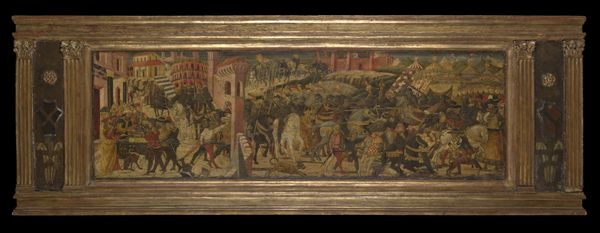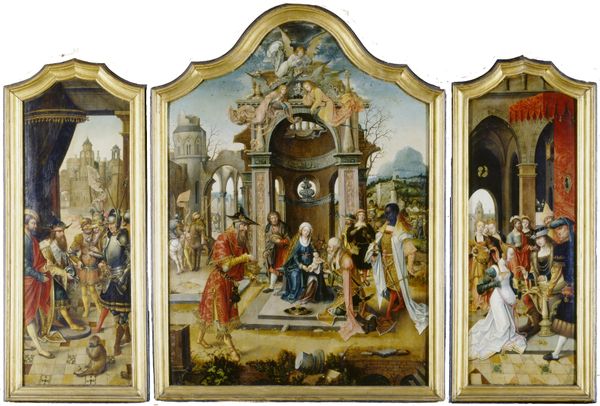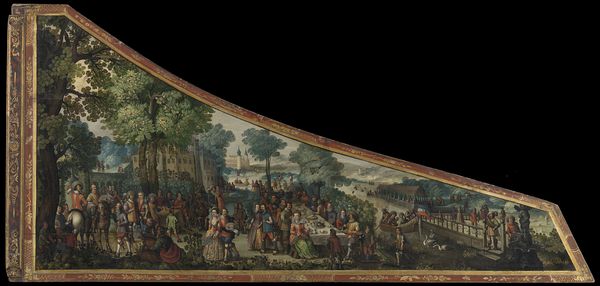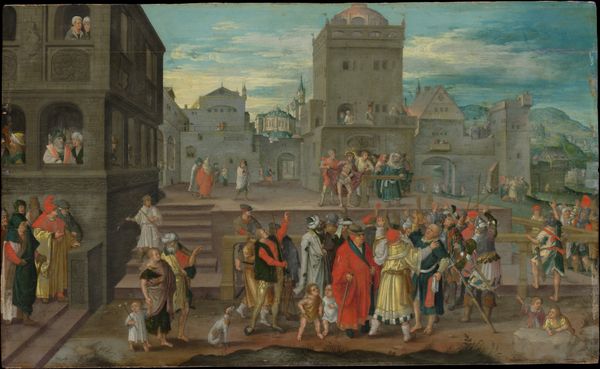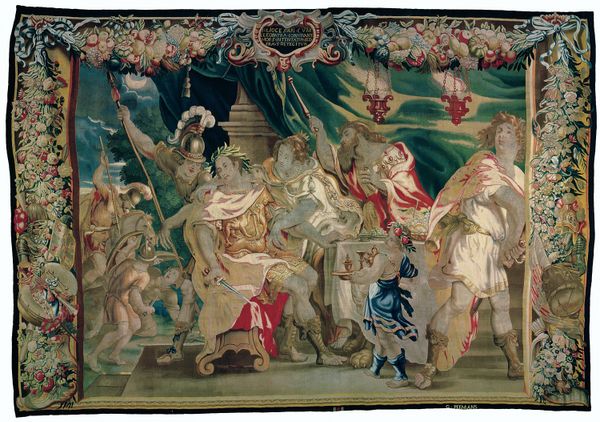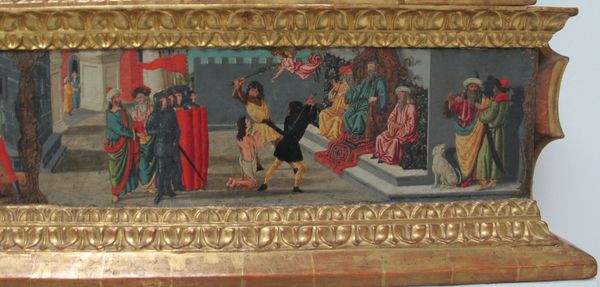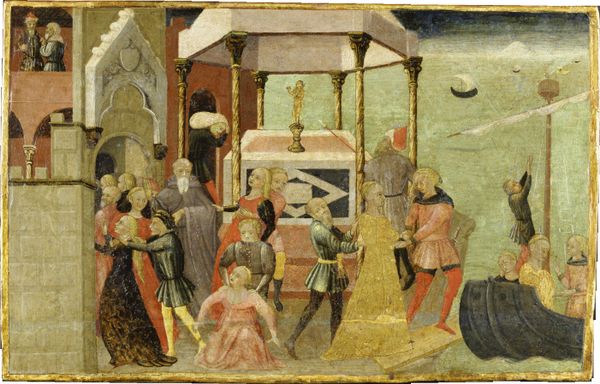
tempera, painting, fresco
#
narrative-art
#
tempera
#
painting
#
fresco
#
handmade artwork painting
#
history-painting
#
academic-art
#
italian-renaissance
Dimensions: 15 5/8 x 61 3/4 x 1/4 - 3/4 in. (39.69 x 156.85 x 0.64 cm) (panel)
Copyright: Public Domain
Curator: Let's take a moment to observe "The Triumph of Scipio Africanus," a tempera on panel work created around 1470. Editor: Wow. I'm immediately struck by this cacophony of tiny figures! It’s like a Renaissance parade exploded onto a golden tapestry, chaotic, yet somehow… festive? Curator: Precisely. Note the artist’s ambitious attempt to capture the magnitude of Scipio's victorious return. The meticulous details, almost miniature-like, serve to illustrate not only the event itself but also to project power through opulent display. Semiotics plays a crucial role here. The painting, functioning as an early form of propaganda, communicates Scipio’s might. Editor: Propaganda, you say? Well, if this is propaganda, it’s certainly dressed up in its Sunday best! Seriously, look at all that gold. Reminds me of an ancient board game frozen mid-play—all that pomp frozen solid. Curator: Consider, though, the composition itself. The arrangement and treatment of spatial perspective, though not entirely convincing to our modern eyes, creates depth by stacking and overlapping its components, effectively conveying a large military campaign entering a developed town. Editor: Sure, perspective is a bit wonky. It is definitely crowded, isn’t it? Still, that shimmering gold—it almost drowns out the political message. I love the tiny details of each little soldier's garb, you almost lose the big picture. Curator: Exactly. And what's fascinating here is to also consider the Italian Renaissance context of how an artist is exploring linear perspective, use of materials like fresco or tempera—all tools of expressing Renaissance sensibilities. It highlights the significance of material objects and spectacle. Editor: So, it’s not just a historical painting but a show of material worth and skills? Like saying, “Look how well I can handle perspective. And gold leaf!” It's almost boastful. But... kinda love that swagger! Curator: Precisely! It is about skill and wealth meeting grand narrative traditions. An ambitious work intended to leave a profound and lasting impression. Editor: And in a world of understated grays, that pop of shimmering gold definitely makes this a win, as much a testament to wealth and artistic achievement. This feels grander. I like it.
Comments
minneapolisinstituteofart almost 2 years ago
⋮
The African campaign ended with the victory of the Romans at the Battle of Zama (202 B.C.E.) and the glorious return of Scipio, who crossed the Mediterranean sea and landed in Sicily (on the left of the panel). On his way Scipio was saluted by the people exultant about the end of the war. He was called “the African,” the first military commander to be honored with the name of the people defeated in war. The panel shows Scipio’s triumphal entrance into Rome. He is seated on an elaborate chariot draped in precious fabrics with enemies chained at its base. On the front, however, sits the jester whose role is to tease the hero, reminding him to remain humble and not to forget his transitory position as victorious general. Rome is recognizable thanks to famous landmarks, such as the Colosseum and Trajan’s Column, both however revealing the amusing historical ignorance of the artist and of the patron. In fact, the column, with the spiraled frieze reporting the military campaigns of the Emperor Trajan, was erected only 40 years after Scipio’s triumph, in 172 B.C.E., and the Colosseum was begun only in 72 A.C.E:, almost three hundreds years later.
Join the conversation
Join millions of artists and users on Artera today and experience the ultimate creative platform.
